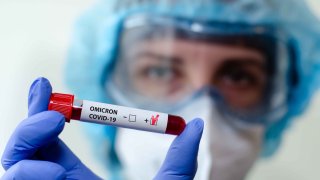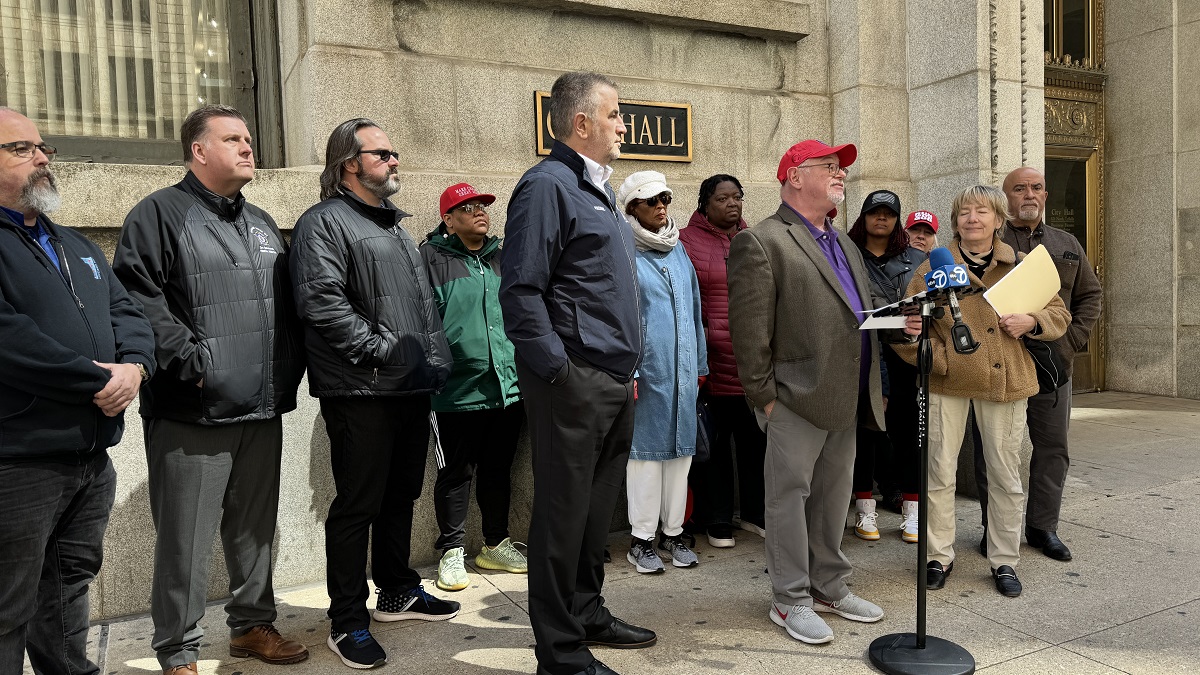
If someone in your household has tested positive for COVID-19, do you need to quarantine after exposure?
If a person is fully vaccinated against the virus, Chicago Department of Public Health Commissioner Dr. Allison Arwady said there's no need to quarantine due to a family member contracting COVID.
The person experiencing symptoms or testing positive, however, should isolate away from others for five days and then continue to wear a mask for 10 days, according to Arwady.
When inviting people over to your home, Arwady advised it might be best to hold off.
Feeling out of the loop? We'll catch you up on the Chicago news you need to know. Sign up for the weekly Chicago Catch-Up newsletter here.
"In terms of having guests in the home, my recommendation there...I would basically from whenever anybody is testing positive or having symptoms, I would just give it 10 days from either of those two, you know, having guests in your home presumably have masks off, etc.," Arwady said. "I would recommend just waiting that 10 days."
Here's the breakdown of quarantine and isolation guidance from the Centers for Disease Control and Prevention:
Quarantine
If you come into close contact with someone with COVID, you should quarantine if you are not up-to-date on COVID vaccines or are unvaccinated. For these individuals, the CDC and IDPH recommend you:
- Stay home and away from other people for at least 5 days (day 0 through day 5) after your last contact with a person who has COVID. The date of your exposure is considered day 0. Wear a well-fitting mask when around others at home, if possible.
- For 10 days after your last close contact with someone with COVID-19, watch for fever (100.4◦F or greater), cough, shortness of breath, or other COVID-19 symptoms.
- If you develop symptoms, get tested immediately and isolate until you receive your test results. If you test positive, follow isolation recommendations.
- If you do not develop symptoms, get tested at least 5 days after you last had close contact with someone with COVID.
- If you test negative, you can leave your home, but continue to wear a well-fitting mask when around others at home and in public until 10 days after your last close contact with someone with COVID.
- If you test positive, you should isolate for at least 5 days from the date of your positive test (if you do not have symptoms). If you do develop COVID symptoms, isolate for at least 5 days from the date your symptoms began (the date the symptoms started is day 0). Follow recommendations in the isolation section below.
- If you are unable to get a test 5 days after last close contact with someone with COVID, you can leave your home after day 5 if you have been without COVID symptoms throughout the 5-day period. Wear a well-fitting mask for 10 days after your date of last close contact when around others at home and in public.
- Avoid people who are have weakened immune systems or are more likely to get very sick from COVID, and nursing homes and other high-risk settings, until after at least 10 days.
- If possible, stay away from people you live with, especially people who are at higher risk for getting very sick from COVID, as well as others outside your home throughout the full 10 days after your last close contact with someone with COVID.
- If you are unable to quarantine, you should wear a well-fitting mask for 10 days when around others at home and in public.
- If you are unable to wear a mask when around others, you should continue to quarantine for 10 days. Avoid people who have weakened immune systems or are more likely to get very sick from COVID, and nursing homes and other high-risk settings, until after at least 10 days.
- Do not travel during your 5-day quarantine period. Get tested at least 5 days after your last close contact and make sure your test result is negative and you remain without symptoms before traveling. If you don’t get tested, delay travel until 10 days after your last close contact with a person with COVID. If you must travel before the 10 days are completed, wear a well-fitting mask when you are around others for the entire duration of travel during the 10 days. If you are unable to wear a mask, you should not travel during the 10 days.
- Do not go to places where you are unable to wear a mask, such as restaurants and some gyms, and avoid eating around others at home and at work until after 10 days after your last close contact with someone with COVID.
Those who are close contacts of someone with COVID but are up-to-date on their vaccinations or have had a confirmed case of COVID within the last 90 days do not need to quarantine, but the CDC does recommend they wear a well-fitting mask around others for 10 days after their most recent exposure and get tested after at least five days.
Local
Isolation
According to the CDC, people who are positive for COVID should stay home until it's safe for them to be around others, including even other members of their home.
Health officials recommend a "sick room" or area for those who are infected and a separate bathroom, if possible.
But isolation may not just be for those who test positive. The CDC also recommends those who have symptoms of COVID and are awaiting test results or have not yet been tested isolate, "even if they do not know if they have been in close contact with someone with COVID-19."
How do you end isolation?
- You can end isolation after five full days if you are fever-free for 24 hours without the use of fever-reducing medication and your other symptoms have improved (Loss of taste and smell may persist for weeks or months after recovery and need not delay the end of isolation).
- If you continue to have fever or your other symptoms have not improved after 5 days of isolation, you should wait to end your isolation until you are fever-free for 24 hours without the use of fever-reducing medication and your other symptoms have improved. Continue to wear a well-fitting mask through day 10. Contact your healthcare provider if you have questions.
- Do not go to places where you are unable to wear a mask, such as restaurants and some gyms, and avoid eating around others at home and at work until a full 10 days after your first day of symptoms.
So how do you calculate your isolation period?
According to the CDC, "day 0 is your first day of symptoms." That means that Day 1 is the first full day after your symptoms developed.
For those who test positive for COVID but have no symptoms, day 0 is the day of the positive test. Those who develop symptoms after testing positive must start their calculations over, however, with day 0 then becoming the first day of symptoms.
Under the CDC guidance, those in isolation should:
- Monitor your symptoms. If you have an emergency warning sign (including trouble breathing), seek emergency medical care immediately.
- Stay in a separate room from other household members, if possible.
- Use a separate bathroom, if possible.
- Take steps to improve ventilation at home, if possible.
- Avoid contact with other members of the household and pets.
- Don’t share personal household items, like cups, towels, and utensils.
- Wear a well-fitting mask when you need to be around other people.



